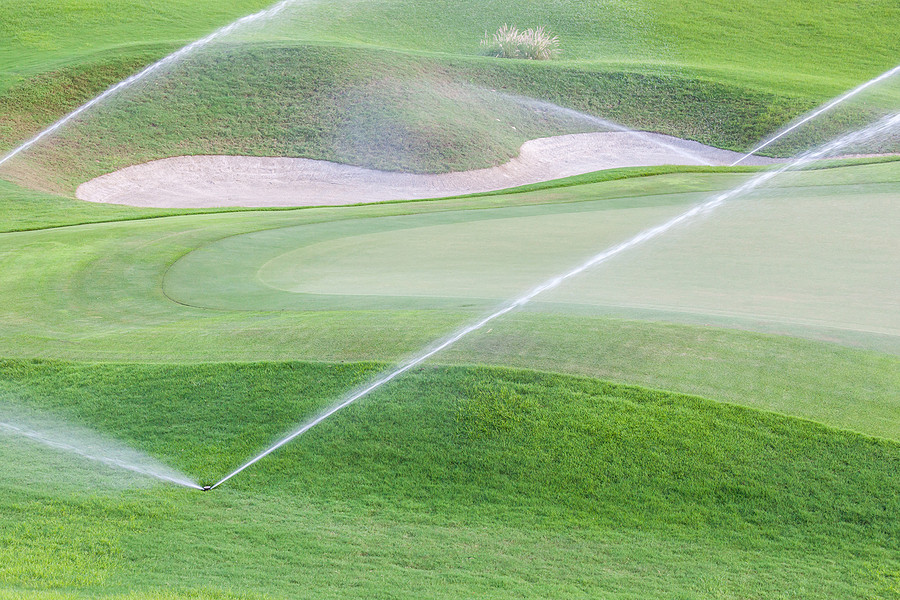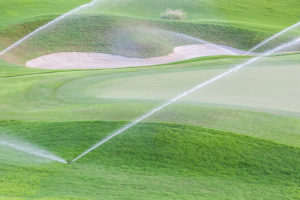
30 Nov The Partnership of Water & Turfgrass
 As the winter weather rolls in and all of us that reside in colder temps take a break from outdoor turfgrass management, it doesn’t mean it’s the time to get lazy. There is work that can be performed indoors and research that can be done to prepare for the upcoming spring. And when it comes to turfgrass, the work to create ideal turfgrass never stops!
As the winter weather rolls in and all of us that reside in colder temps take a break from outdoor turfgrass management, it doesn’t mean it’s the time to get lazy. There is work that can be performed indoors and research that can be done to prepare for the upcoming spring. And when it comes to turfgrass, the work to create ideal turfgrass never stops!
To help supers better improve their turfgrass, it’s important to first understand its relationship with water. We all know that water is the key ingredient for life as we know it, and it’s a requirement for the survival of turfgrass as well. But golf courses can’t just rely on naturally occurring rain showers to create ideal surface conditions for players. No, part of any good golf course’s turfgrass management solution for keeping fairways and greens in good shape must include sprinkler water as well. But does your water have what it takes to help your turfgrass succeed?
Water and Turfgrass: A Key Match
While we all know how important water is, do you know how it works in partnership to help turfgrass thrive? Here’s a look at some of the key ways it can help promote healthy grass.
- Protecting it: Water diffuses into soil and feeds the roots of the turfgrass, which helps to protect it from temperature swings. This is especially helpful for ensuring that a golf course stays green and in pristine condition during even the hottest periods of the year.
- Cooling turfgrass: If the sun beats down on turfgrass all day, as is often the case on many parts of a golf course, it’s not just going to dry out—but it’s going to get very hot. Water offers a fast, simple way to cool down the playing surface.
It’s also worth noting that properly watered, healthy turfgrass is a benefit to the environment. Healthy turfgrass can minimize erosion, lead to cleaner air, better absorb rainwater and help counteract pollutants.
When Was the Last Time You Had Your Irrigation Water Tested?
Contrary to what you may think, not all water is created equal. And if the water quality in your golf course’s irrigation system isn’t up to par (pun intended), then it’s going to impact the overall quality of your fairways and greens. That’s why it’s helpful to have your irrigation water tested. Water testing can help eliminate guesswork and provide actionable insight on how you can ensure your golf course turf is being fed to grow the highest quality turf.
Most golf courses get their water from municipal supplies or wells. Because these sources can vary, so too can the water. Things like boron, high levels of chlorine, carbonate and bicarbonate can all have a detrimental effect on turfgrass and surrounding plant species. The good news is that there are ways to balance irrigation water, but if you don’t know the makeup of your water, then you don’t know there’s a problem. And if there is a problem, it’s your golf course that’s sure to suffer.
Contact Soil and Water Consulting Today
It’s important to have your water tested, the results analyzed and an action plan put in place. As a Brookside Labs partner, Soil & Water Consulting can help! We can test your water, review the results with you and figure out the next steps.

